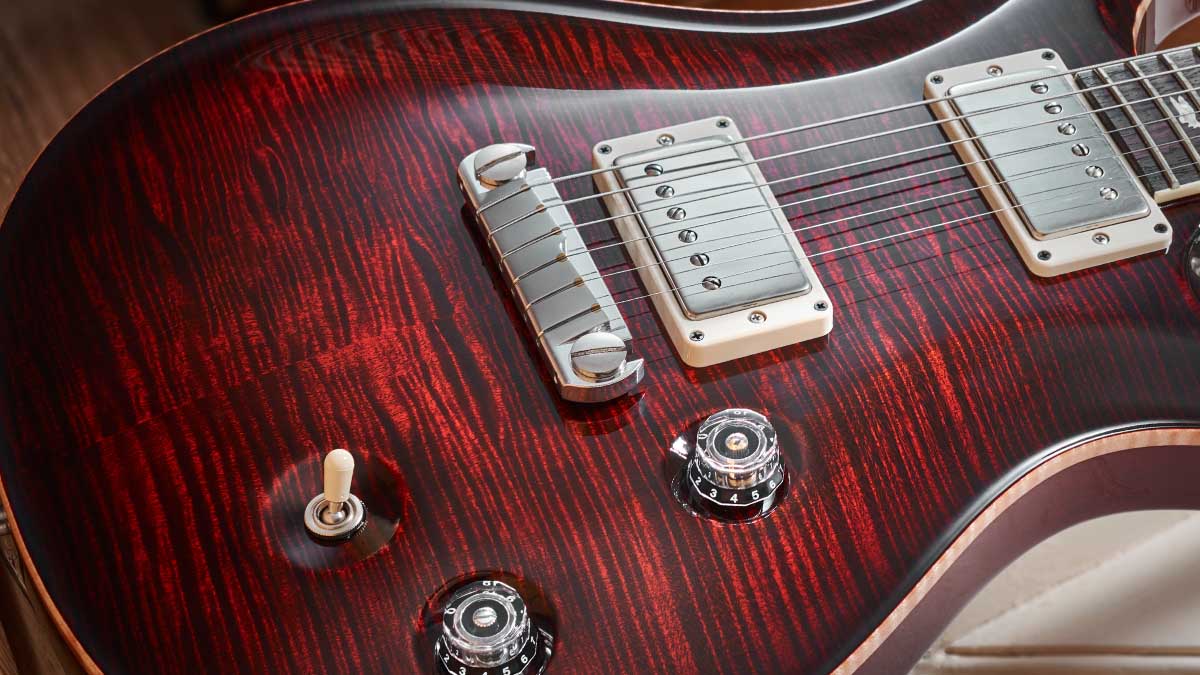MusicRadar Verdict
Classy, refined, versatile and perfectly balanced, the updated McCarty is more than worthy of the name on its truss rod cover, and remains a stellar example of PRS's aspirational guitar design.
Pros
- +
Attention to detail on the build is remarkable.
- +
Nice weight and balance.
- +
Expansive range of tones.
- +
Playability.
- +
Hardware is top banana.
Cons
- -
Well, of course all this ain't cheap.
- -
Lots of competition (mainly from PRS Core and more affordable S2 models).
MusicRadar's got your back
What is it?
The Paul Reed Smith McCarty double-cut has always been somewhat overshadowed by the Custom but it's one of the most important electric guitars in PRS history.
This was PRS's first guitar to be ostensibly targeted at the legions of players looking for a vintage instrument. Of course, PRS is no vintage instrument specialist, so this invited a fresh approach to building an old-school electric. Ted McCarty wasn't involved directly, but the former Gibson president's vision and legacy was an inspiration.
In 1994, PRS took its double-cut silhouette and beefed up the body, increasing the depth of its mahogany back by 3mm. Aside from the Custom, all PRS Core guitars today share that body depth. The McCarty had a pair of vintage-voiced humbuckers with a three-way toggle selector – all very Gibson – and after a couple of years would incorporate a coil-split on the tone control too.
This blueprint has been in situ ever since, with the McCarty falling in and out of production, only to be resurrected in 2016, and updated this year with new TCI-tuned pickups and a nitro-over-cellulose (CAB-acrylic lacquer) finish.
The 2020 McCarty should look and feel reassuringly familiar, but do these subtle upgrades make much of a difference?
If we take the long view, this is a carefully evolved version of the 1994 McCarty. True to Paul Reed Smith's belief in the divinity of a guitar's relationship with the string, the McCarty's modifications have arguably been most profound at the bridge, nut and tuners.
Not a man to miss a detail, Paul Reed Smith insists that the weight of the tuners makes a significant difference to the guitar's tone.
The bridge on the 2020 McCarty is the nickel-plated, machined aluminium Stoptail as seen on Paul's Guitar, with all-important brass inserts making contact with each string. The tuners have been revised, too.
The 2020 McCarty replaces the Phase III locking tuners of the 2016 version with a set of vintage Kluson-style (non-locking) tuners that have unplated brass string posts and faux bone buttons.
Changing the tuners was a decision made on matters of tone. Not a man to miss a detail, Paul Reed Smith insists that the weight of the tuners makes a difference to the guitar's tone.
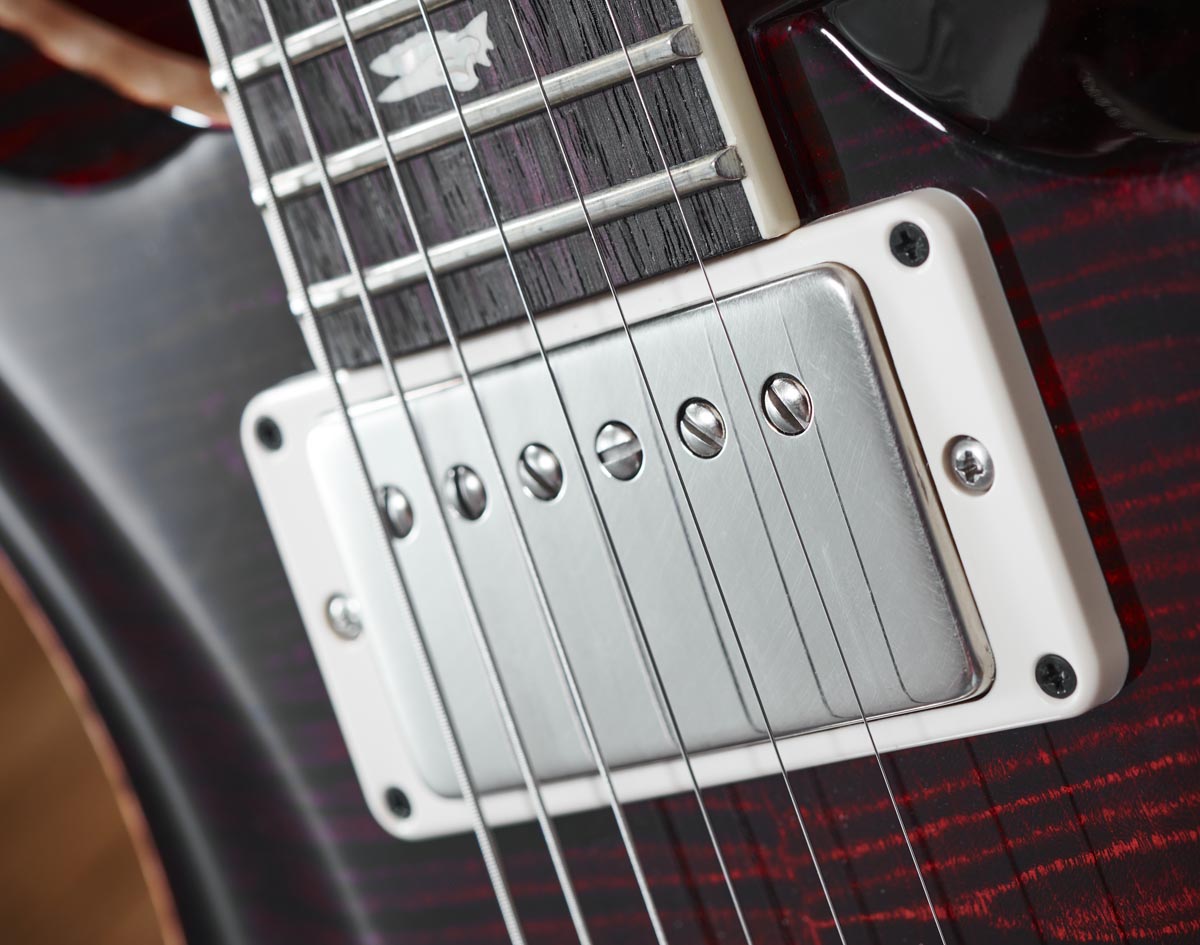
The neck and bridge 58/15 ‘LT’ humbuckers have matched outputs. Both are equipped with PRS's partial splits, which, when engaged, delivers some lovely Tele-esque tones.
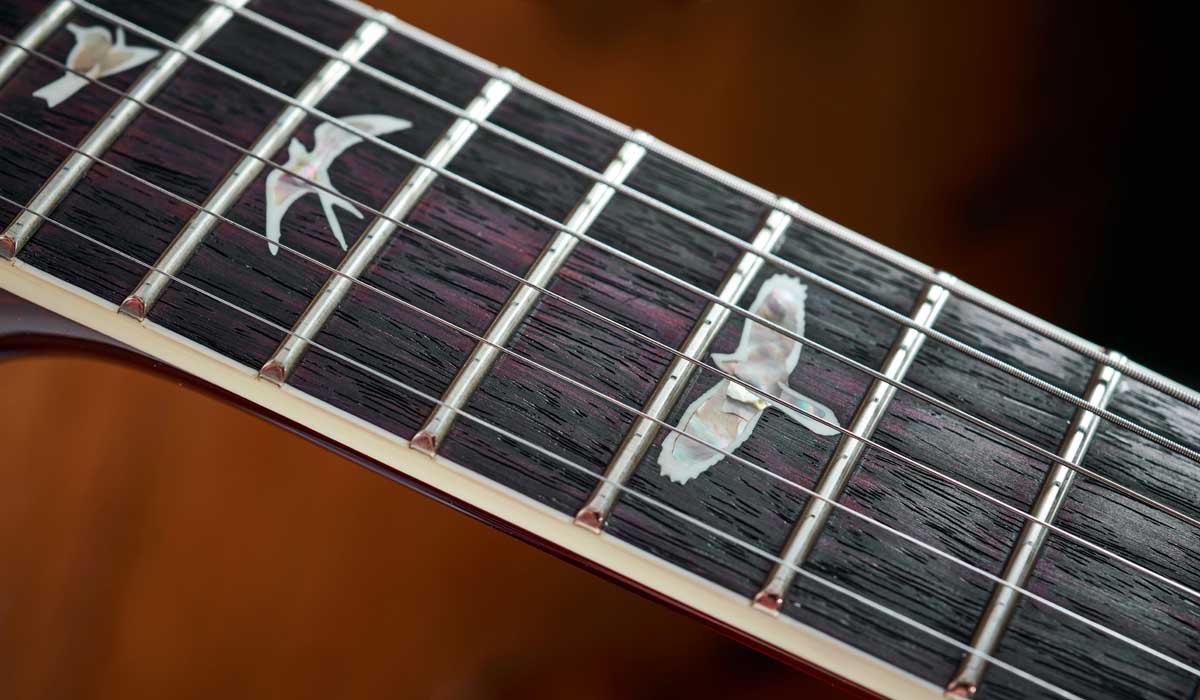
The vintage ivory acrylic of the headstock is reprised for the neck binding and edge of the green ripple abalone bird inlays.
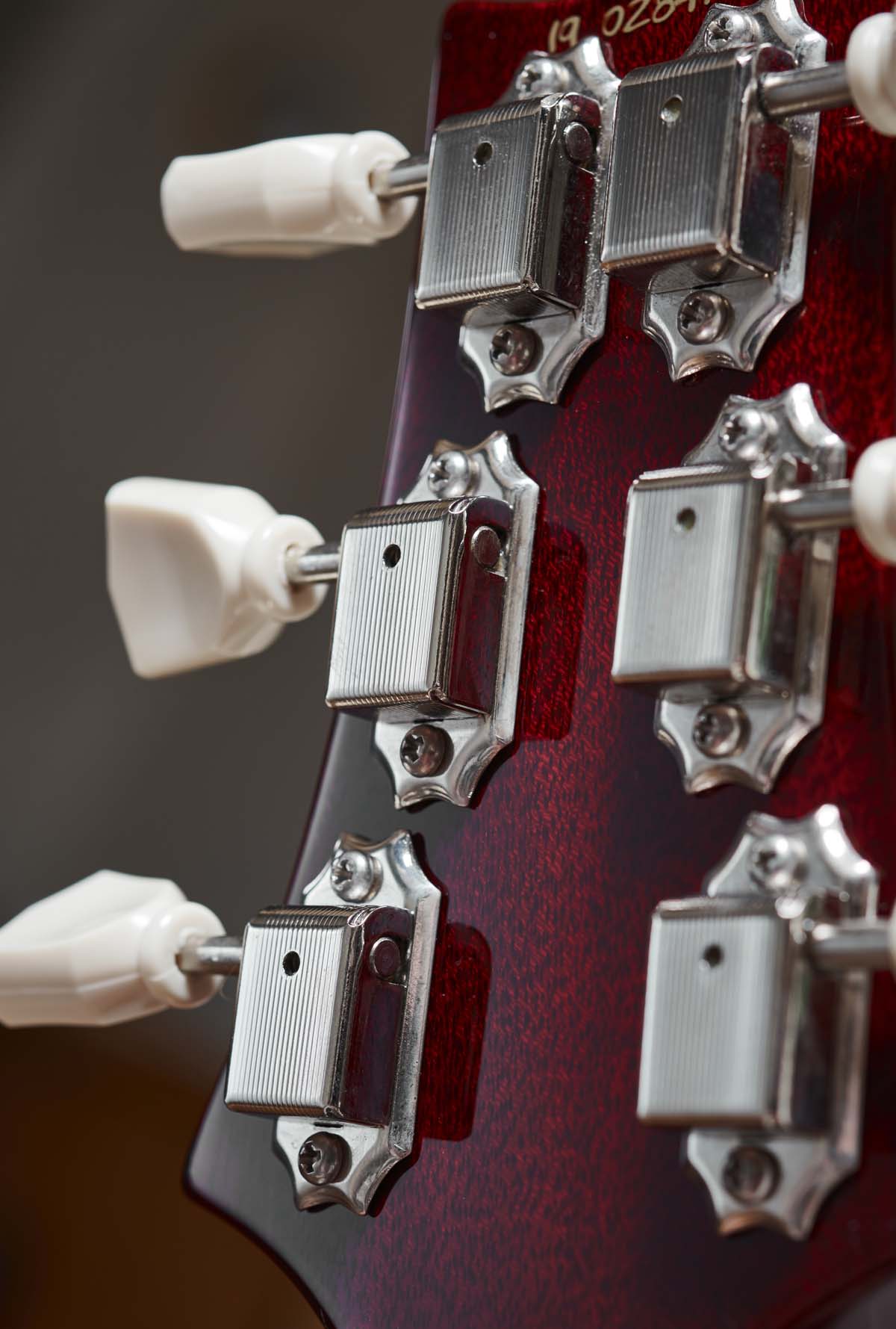
The vintage-style (non-locking) tuners replace the Phase III locking tuners of the 2016 model.
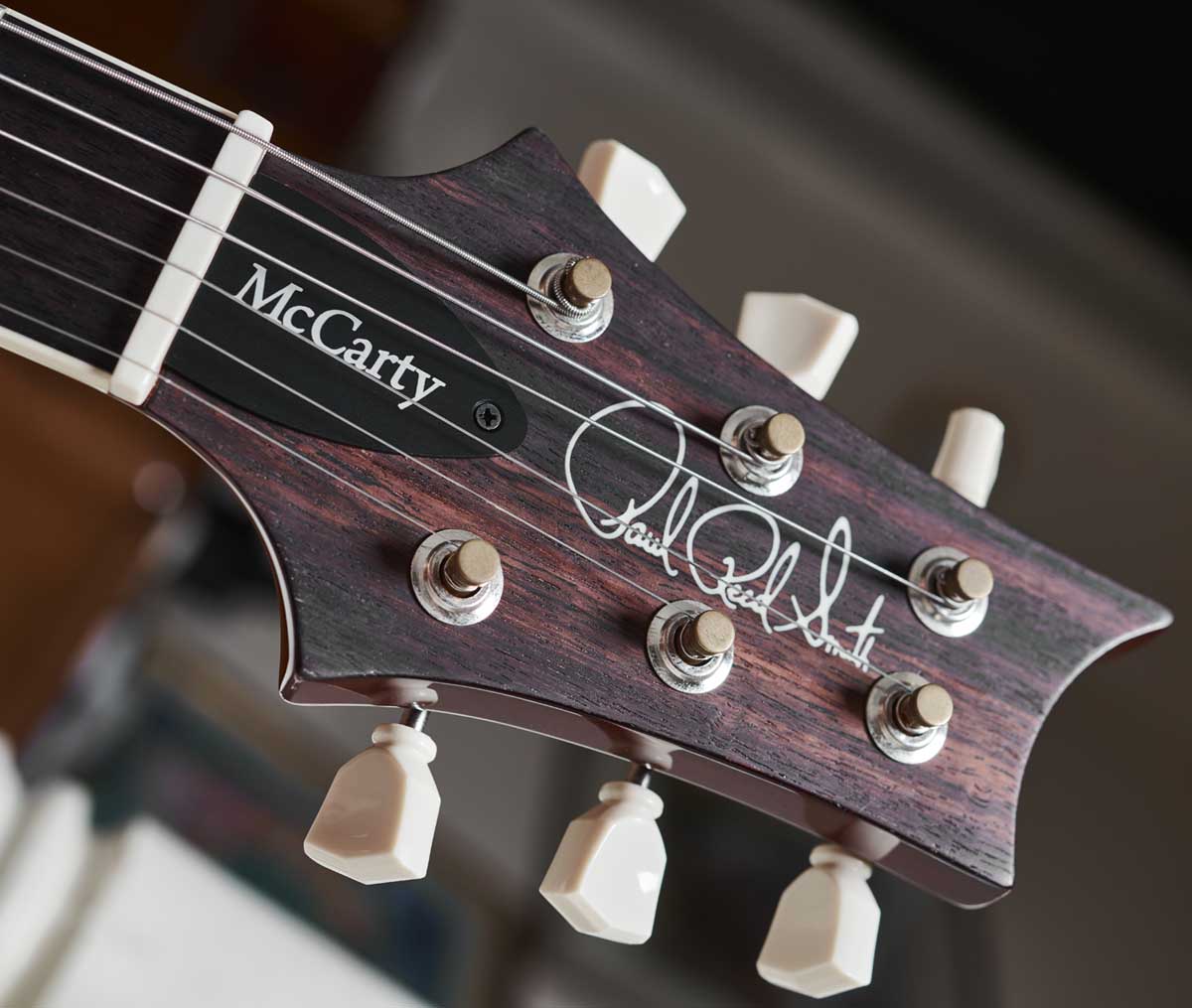
The headstock's Indian Rosewood matches the fingerboard. The nut is bone, the truss rod cover plate is engraved anodised aluminium, while the PRS logo is rendered in vintage ivory acrylic.
Who are we to doubt him? Certainly, the TCI-tuned 58/15 humbuckers have been tweaked so that both neck and bridge pickups have the same output. We'd expect the bridge pickup to be a little hotter, but the Tuned Capacitance Inductance process allows PRS to make exacting adjustments on the pickup's response and on the control circuit.
The glacé cherry on top of the tonewood sundae is the new nitro-over-cellulose finish. You might find it filed under "cellulose acetate butyrate" in the lab, and it is nitrocellulose lacquer mixed with Plexiglas – which according to PRS himself makes an excellent base coat over which to spray regular nitro.
Besides the Private Stock and Dave Grissom models, which are purely nitro, all USA PRS guitars now use this. Tasty.
Performance and verdict
The 2020 McCarty has neck that is a little shallower than the 594’s Pattern Vintage profile, and a smidgen more V profiled, but its Pattern profile (the profile formerly known as "Wide Fat") is still a considerably piece of wood in the palm.
It's classy, old-school, and allied to the cream bound edges and meticulous fretwork (a little taller than on the 2020 S2 models) it feels incredible. As we've found with the other PRS instruments we have had in for review in recent months, the action is bang on, with string height a very player-friendly 1.6mm on both treble and bass sides.
At just under 7lb, the McCarty will be many players' idea of the Goldilocks weight for a solid-bodied guitar. It's not balsa, but neither are you going to have to wear a therapeutic corset after an hour-long set down the Dog and Duck.
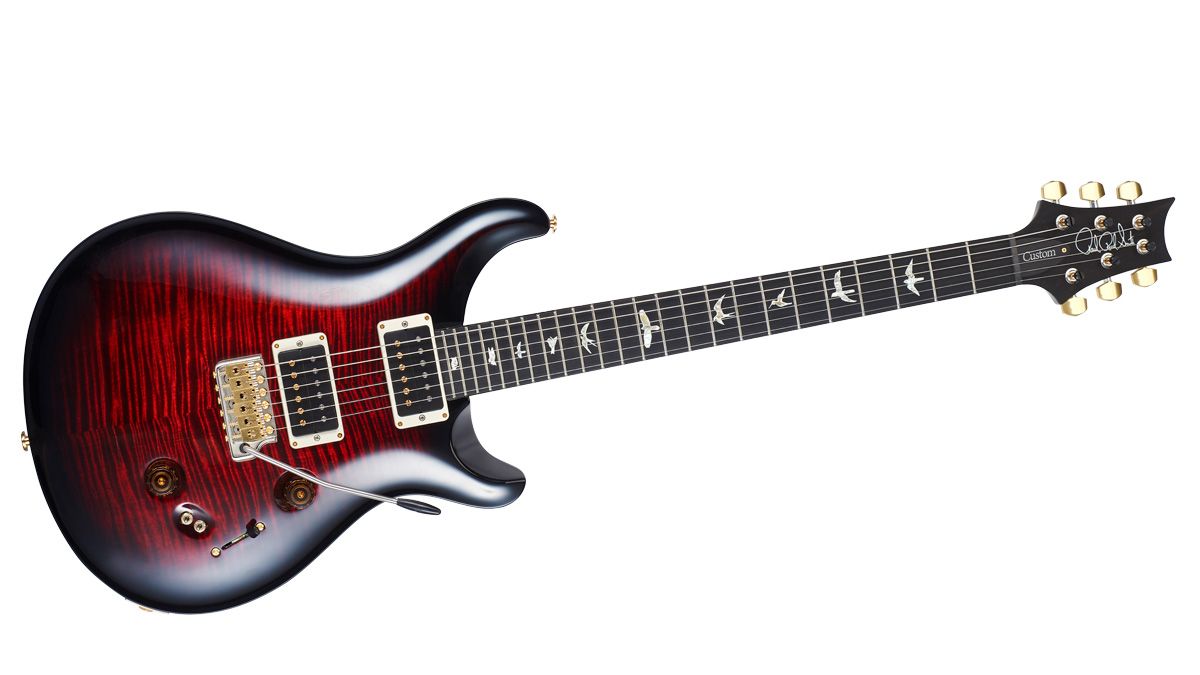
• PRS Custom 24-08
The choice over which Custom you buy is up to you of course, but whichever one you select you’ll be buying into, arguably, the only real progression of the electric guitar since about 1965.
• PRS Paul's Guitar
Aside from the effortless playability, intonation, tuning stability and old-world resonance (all foundations of the PRS empire), the single-coil voices from these new TCI pickups raise the bar, while the humbucking side seems to pack musical heat, clarity and considerable versatility in equal measure.
Once again, we're faced with a PRS guitar that offers a ridiculous amount of tone options. If Ted McCarty's guitar designs packed a heck of a lot of onboard tone-shaping, then the PRS named in his honour picks up the baton and runs with it.
Being a healthy slap of mahogany and maple, it is a most pleasant surprise to find the single-coil mode offering some Tele-esque tones, with heaps of definition in the neck pickup and a pleasingly honk in the bridge position that would play well to the Nashville set.
In full humbucker mode, the McCarty is all about the heart attack tones – beef and heavy cream. Perhaps a more Les Paul voicing. But then there is a sobering amount of clarity in that bridge 'bucker that will serve as a nice corrective to a dull amp or a difficult mix.
The neck pickup is on-point in terms of balance and output, and while it's thicker, woodier, the hot broth and creamier of the too, there's an impressive definition to its voice. If '50s jazz is your bag, well it can certainly handle that, too. There is a treble-bleed cap but rolling back some of the volume can take a little top off.
The McCarty doesn't have the additional blended single-coil and humbucker voicings of the 594 but that's hardly a barrier to tonal wayfaring. Just tweaking the volume and tone controls opens up fertile ground for experimentation and finding those in-between tones.
And, like it needs saying, the McCarty is unsinkable in terms of tuning and intonation. Sure, the new old-style tuners are cool and we'll trust Paul Reed Smith's ears that they're making a difference tone-wise here, but we barely needed to touch them.
Maybe the Custom will always be the flagship model, the go-to for those looking for that aspirational PRS playing experience, and the ever-improving S2 linup, Paul's Guitar, the DGT and 509 will pull focus, but the new and improved McCarty can more than hold its own in that company.
For a modern-classic build with one foot in Planet Vintage, it's one versatile beast, and an impeccably put together instrument that's ripe with musical potential.
MusicRadar verdict: Classy, refined, versatile and perfectly balanced, the updated McCarty is more than worthy of the name on its truss rod cover, and remains a stellar example of PRS's aspirational guitar design.
Hands-on demos
PRS
Andertons
Brian's Guitars
Specifications
- ORIGIN: USA
- TYPE: Double-cutaway, carved-top solid-body electric
- BODY: Mahogany with flame maple carved top
- NECK: 1piece mahogany, Pattern profile, glued-in
- SCALE LENGTH: 635mm (25”)
- NUT/WIDTH: Bone/43.13mm
- FINGERBOARD: Faux-bone bound rosewood, bird inlays, 254mm (10”) radius
- FRETS: 22, medium
- HARDWARE: PRS Stop-tail with brass inserts, vintage-style (non-locking) tuners – nickel plated
- STRING SPACING, BRIDGE: 52.5mm
- ELECTRICS: 2x PRS 58/15 ‘LT’ covered humbuckers, 3-way toggle pickup selector switch, master volume and tone control (with pull/push coil-split switch)
- WEIGHT (kg/lb): 3.16/6.95
- OPTIONS: With 10-grade figured maple top and hybrid hardware (£4,125); Artist Pack upgrade (£POA)
- RANGE OPTIONS: Other 22-fret double-cuts include the DGT (from £3,350), Custom 22 (£3,459), McCarty 594 (£3,699) and Paul’s Guitar (£3,799)
- LEFT-HANDERS: No
- FINISHES: Fire Red Burst (as reviewed) from choice of 19 standard colours – all gloss nitro-over-cellulose
- CONTACT: PRS Guitars
MusicRadar is the number one website for music-makers of all kinds, be they guitarists, drummers, keyboard players, DJs or producers...
- GEAR: We help musicians find the best gear with top-ranking gear round-ups and high-quality, authoritative reviews by a wide team of highly experienced experts.
- TIPS: We also provide tuition, from bite-sized tips to advanced work-outs and guidance from recognised musicians and stars.
- STARS: We talk to musicians and stars about their creative processes, and the nuts and bolts of their gear and technique. We give fans an insight into the craft of music-making that no other music website can.
“Every one of them said yes without hesitation": Hank Marvin and Roger Taylor have just remade a '60s classic for charity
Do you know where your money goes when you buy a gig ticket? A new report breaks it down
“Every note counts and fits perfectly”: Kirk Hammett names his best Metallica solo – and no, it’s not One or Master Of Puppets
